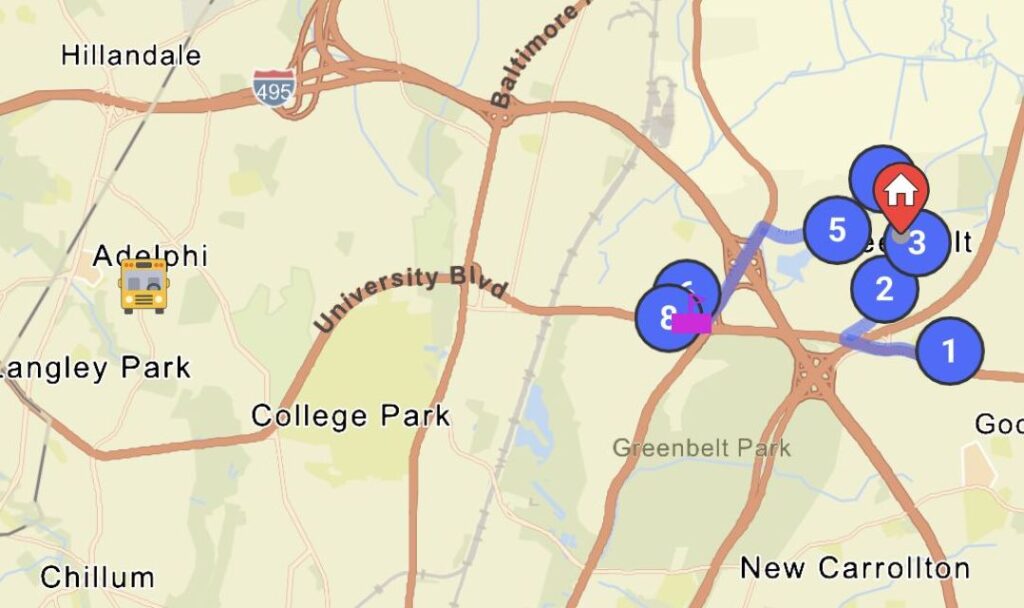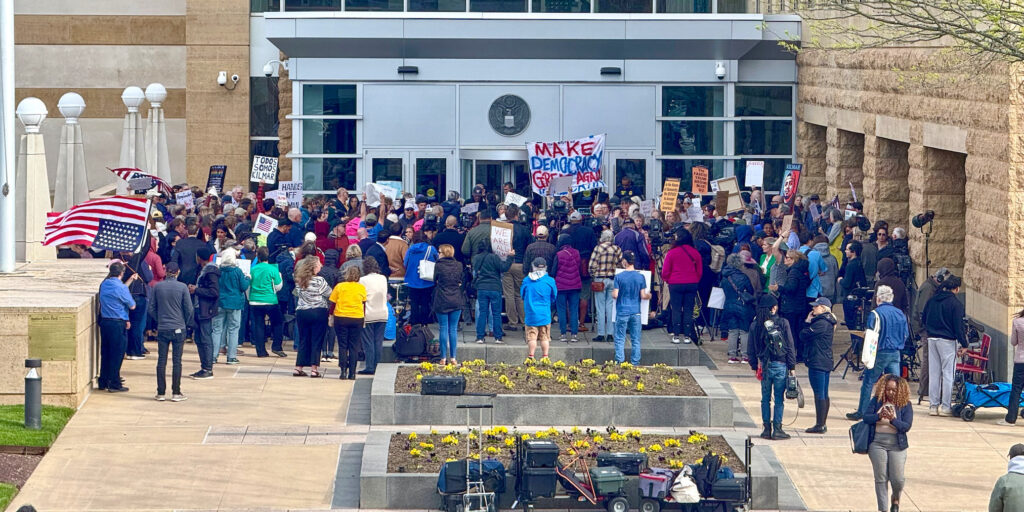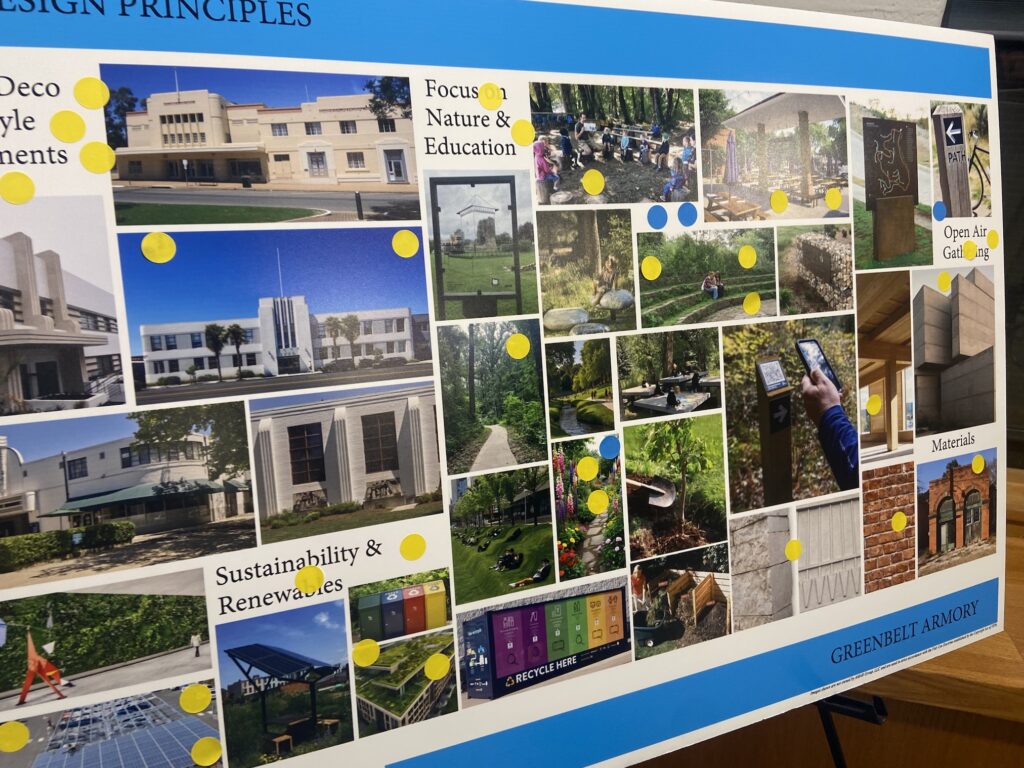The Greenbelt News Review solicited comments from Greenbelt parents about their experiences with transportation to see how this year’s transportation changes are impacting families and students locally.
Amidst an ongoing driver shortage, Lei Zong’s children didn’t have an assigned bus driver in the mornings. A driver drops off students at Greenbelt Elementary School and picks up students for Robert Goddard from there. Then it’s a 50-60 minute bus ride to school, arriving pretty much in time for that school’s 9:30 a.m. start. Though the afternoon bus is working well, getting them home in 20-30 minutes, rather than sending her children on the hour-long morning bus ride, Zong now carpools with some other parents to drive them to the school, which is about 15 minutes away.
Chani Adams has a child attending an out-of-boundary school and “after a few bumps the first week it’s mostly working well for us,” she says. Her child has an hour-long ride each way. Taking the bus they arrive “right at or after” the school’s daily start time she finds.
Vanessa Cruz has a daughter at Fairmont Heights High School in a regional program. She’s found transportation has been difficult since the first day. Her daughter isn’t picked up on time and sometimes the bus doesn’t show up. Cruz says her daughter gets home three hours after dismissal in the evening, calling the situation “ridiculous,” and says her daughter is missing too much school due to the transportation challenges.
Kateri Baker’s children ride the bus from central Greenbelt to Dora Kennedy French Immersion (DKFI) on Greenbelt Road. “The driver has been very consistent and besides overcrowding the kids have no complaints,” says Baker. Baker’s children are car riders in the afternoon but another family attending DKFI switched to a different afternoon route due to problems with their nearest one.
Holly Leon-Lierman reported the morning bus transporting her child from Greenbelt Elementary to Greenbelt Middle School has been great so far.
The Jenkins family has had less luck with theirs. “My daughter’s bus is unpredictable. In the morning, it gets her to school between 10 and 30-plus minutes after school starts. So naturally, we are mostly driving in the morning,” says Piri Jenkins. The afternoon route seemed to be working well but last week Jenkins had to drive to the school; the bus had still not arrived an hour and a half after dismissal. “The only solution we really have is that we are trying to get her a driver’s license,” says Jenkins.
Jenkins’ other child attends a charter school without county transportation. Traffic around that school is terrible, she reports, as everyone is driving and also contending with Purple Line construction.
StopFinder
The StopFinder App is intended to enable the tracking of school buses, down to their GPS location, so parents and schools know in real time where a bus is on its route. That kind of technology can help a family make it to the stop when the bus comes early and see where their child’s bus is when they’re late getting home from school.
At the school board meeting in March when transportation changes were announced, several board members voiced concerns and confusion that amidst so much change the administration would keep the app parents have been complaining about for years (see the April 4 issue). The administration insisted they expected the app would work this year.
So far StopFinder is performing better for some Greenbelt families but for others the difficulties continue, making it unreliable and unusable.
Just getting access to the app was a challenge for some. One Greenbelt parent, who asked we withhold her name, sent multiple emails, put in a Transportation Resolution Service request and called her child’s school before she finally received an invitation to create an account. The app is tied to families’ accounts in Synergy, the new family portal that replaced SchoolMax late in the summer, but, for this parent, creating her Synergy account didn’t trigger an invitation to StopFinder as it was supposed to. Now that parent says she has access to StopFinder, but the routes drawn do not match the ones the buses take and the assigned bus she can track in the morning is the incorrect one, taking another route. Fortunately, unlike the app, the bus itself has had pretty good performance for their family this year.
Nicola Bless says she’s also having problems with the app and reached out to PGCPS Transportation more than once before school started but has yet to receive a response.
Another family entered an address change in Synergy and uploaded the documentation, but even after contacting the school, their address is still outdated, linking their children to a bus route for their previous home, so they, too, can’t use the app.
However, Adams told the News Review that StopFinder is working well for her family and prevents them from missing the bus. Jessica Blacksten has a child at Greenbelt Middle School and has found the bus runs 10-20 minutes later than scheduled in the afternoon but the app seems to be working. Jenkins also says the bus tracking is working better than previous years.
Meanwhile, the Baker children’s bus has been consistent but the app hasn’t. “The driver let us know that she was planning on arriving consistently 15 minutes earlier than the StopFinder app claimed and the StopFinder app wasn’t working anyway so I haven’t looked at it since the second day of school,” Baker told the News Review.
Though there was no school this Monday in Prince George’s County, StopFinder showed a regular bus schedule for the day, as it does for next Friday, September 27, when there will be a three-hour early dismissal.




